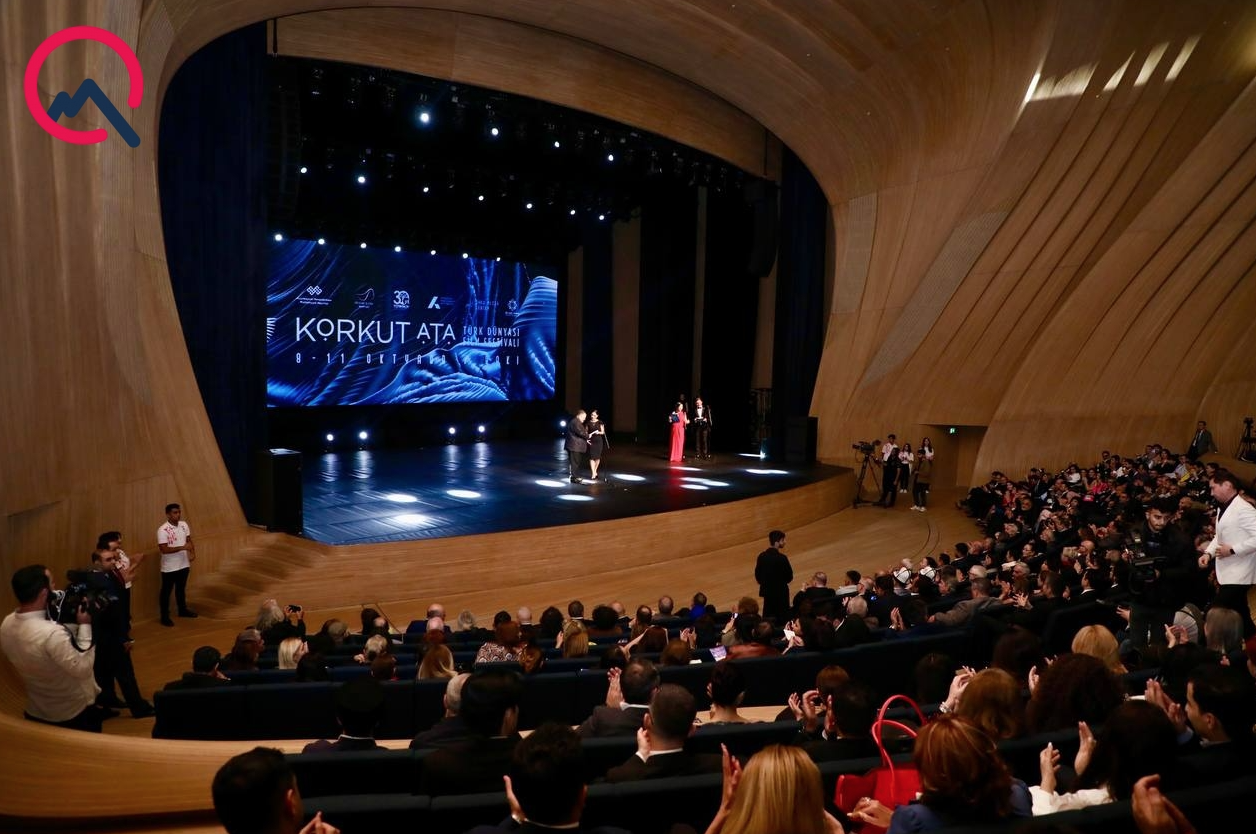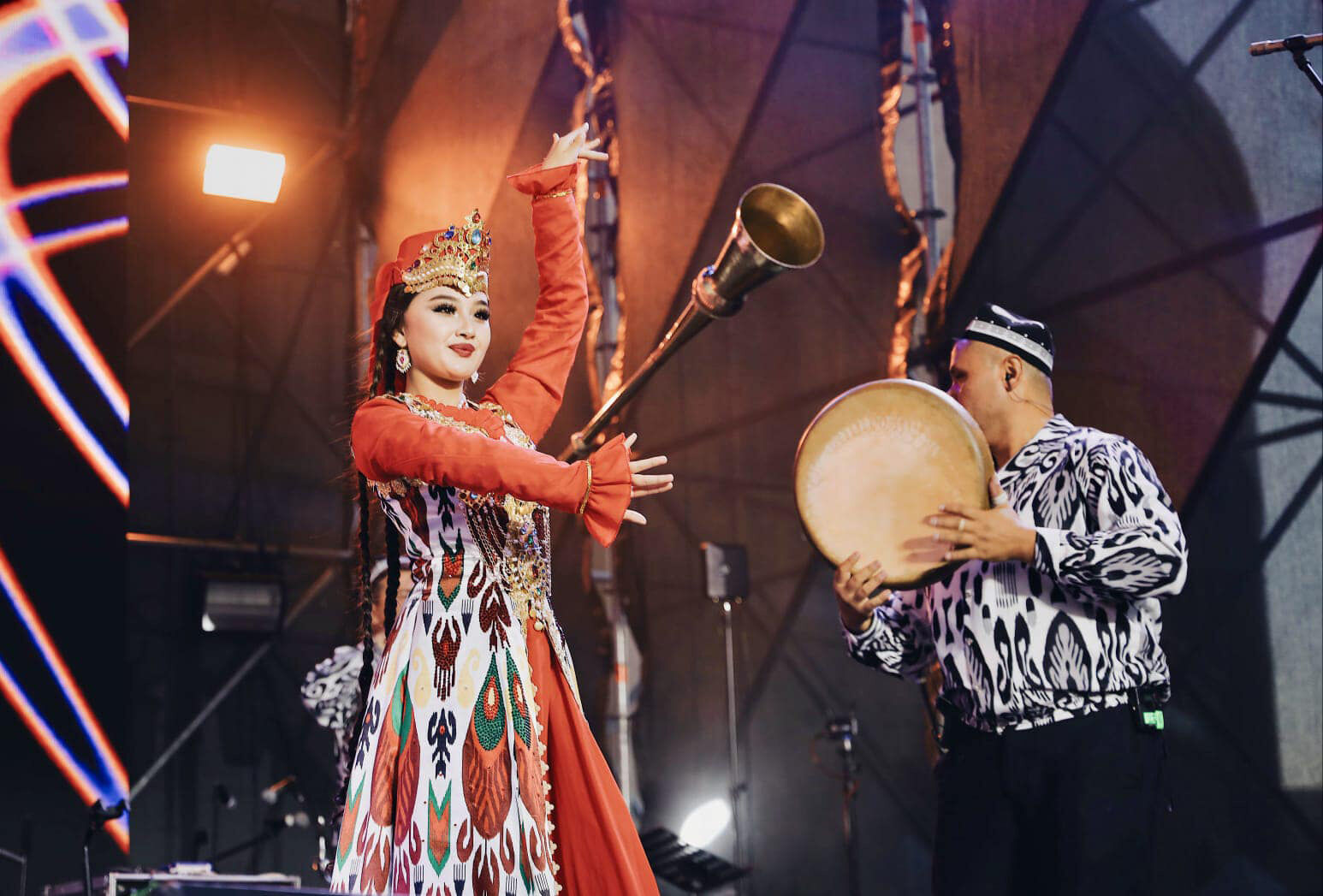ASTANA – Geopolitical shifts call for cultural diplomacy to foster interethnic understanding, a crucial component of maintaining stability. In this landscape, the Turkic world is on the rise, with culture standing at the forefront of its growing integration, said Secretary General of the International Organization of Turkic Culture (TURKSOY) Sultan Raev in an interview with The Astana Times.

Interview with Sultan Raev. Photo credit: The Astana Times.
“Turkic states have a great historical heritage and immense potential for cultural integration. Primarily, it encompasses our language, followed by our culture, and finally, our traditions and lifestyle. It is essential for us to uphold our identity,” said Raev, a prominent literary figure of the Kyrgyz Republic, who was elected as TURKSOY Secretary General in March 2022.

Sultan Raev. Photo credit: turksoy.org.
Headquartered in the Turkish capital of Ankara, TURKSOY serves as a bridge for promoting cultural collaboration and solidarity among Turkic-speaking nations and beyond. It is often referred to as the United Nations Educational, Scientific and Cultural Organization (UNESCO) of the Turkic World.
Over 30 years, the organization has fortified cooperation among member states and solidified its presence in the international arena. The activities of TURKSOY align with the Turkic World Vision 2040, the strategic document based on four pillars – preparedness, resilience, capacity for adaptation, and transformation.
The role of cultural projects in Turkic unification
TURKSOY holds more than 190 events per year, both thematic and strategic, according to Raev.
“The organization has developed a wide range of transnational projects of all cultural directions. One of them is the annual announcement of the cultural сapital of the Turkic world. In 2012, Astana became the first city to be announced as its center,” he said.
Since then, the project has spotlighted the cultural landmarks of 12 cities of its member states. This year, the small Turkmen town of Anau, located eight kilometers from the country’s capital Ashgabat, has become a new focal point of Turkic culture. Kazakhstan was the next destination on Raev’s itinerary after he visited Turkmenistan.
In 2024, the city of Anau will become a venue for the fourth international Korkut Ata Film Festival.
“Korkut Ata Film Festival is one of our major projects. It has gained big success in cinematography. The festival serves as a platform for Turkic filmmakers, showcasing the best films in the industry,” said Raev.
He said that Turkic peoples didn’t have any platforms to strengthen cultural unity before. Raev noted that the festival should become a brand in the modern Turkic world.

The third edition of Korkut Ata Film Festival was held in Baku, Azerbaijan. Photo credit: azerfocus.com.
Another promising project is centered on the study of petroglyphs, ancient rock engravings.
“Petroglyphs represent the earliest manifestation of human genius, predating the works of great artists. All rock drawings hold symbolic value. Our ancestors perceived the world through symbols,” said Raev.
From Raev’s perspective, rock paintings hold a special significance as they represent the earliest documented art within the Turkic world. “Their sacred meaning is integral to our culture,” he added.
The project began this year. According to Raev, TURKSOY plans to issue a six-volume work devoted to the rock art of its six founding member countries: Azerbaijan, Kazakhstan, the Kyrgyz Republic, Uzbekistan, Turkmenistan, and Türkiye.
The Almaty-based Margulan Institute of Archaeology is participating in the project on behalf of Kazakhstan. The institution carries out research under the Committee of Science of the Kazakh Ministry of Science and Higher Education. “I have recently met with them, and they have already embarked on their work,” noted Raev.
Petroglyphs in Kazakhstan are predominantly found in the Zhetisu Region, specifically near the Kazakh cities of Zhetisu and Taldykorgan. The historical name of Zhetisu (seven rivers in Kazakh) derives from the rivers that flow into Lake Balkhash. Only five of them exist today: the Ayagoz River, Lepsy River, Aksu River, Karatal River, and Ili River.
“The Turks were the ones who changed the course of history, founded empires and khanates. They mastered horsemanship and ironworking,” noted Raev.
First hunter-gatherers and farmers, Turks later became nomadic pastoralists. Notably, they have always played an integral role in bridging East and West. A striking example is the Great Silk Road, which paved the first transnational caravan routes through the Eurasian continent from the Mediterranean Sea to China.
TURKSOY-Kazakhstan cooperation
In the early 1990s, Kazakhstan was among the initiators behind the establishment of TURKSOY.
“Kazakhstan stands as a flagship nation in the Turkic world. We maintain a close collaboration with Kazakhstan, which is recognized as one of the key metropolises within the Turkic community,” said Raev.
In his revelations about the country’s impact on global processes, Raev recalled the first interaction between humans and space. The landmark event, which occurred on Kazakh land, symbolized “the opening of Baikonur civilization, new chapters in human culture, and understanding of the world.”
“It was precisely Baikonur that unveiled the cosmos to us. We came to understand what space truly is. The starting point for the exploration of space began here,” he noted.
The cooperation between TURKSOY and Kazakhstan spans various domains.
Last year, on the organization’s 30th anniversary, the Kazakh city of Turkistan, the country’s cultural hub, welcomed foreign guests at the EthnoFashion Festival of the Turkic World. The event continued the sixth International Week of Traditional and Stylized Ethnic Clothing, which commenced earlier in Uzbekistan’s Fergana.

The EthnoFashion Festival of the Turkic World in Turkistan in 2023. Photo credit: time.kz.
Raev brought an example of an upcoming ballet event in Almaty. The Orleu festival on April 3-5 will gather students from choreographic schools of Turkic countries.
The list of participants includes the Director General of the State Opera and Ballet of Türkiye Tan Sağtürk, a well-known Turkish ballet dancer and choreographer. Notably, the festival coincides with the 90th anniversary of Almaty Choreographic School.
“Apart from that, TURKSOY plans to hold the Young Leaders Forum either at the beginning of June or prior to the World Nomad Games. We invited High Representative for the United Nations Alliance of Civilizations (UNAOC) Miguel Angel Moratinos and Nobel Prize winner Aziz Sanjar,” said Raev.
“We advocate for Turkic youth to meet more frequently, particularly for intercultural enrichment. We aim to cultivate national sentiments and pride,” he added.
Last year, Turkic countries agreed to establish the Alliance of Cinema Directors of the Turkic World (TURKFILM) to enhance cooperation in cinematography. In each project, TURKSOY places emphasis on nurturing the younger generation.

The declaration of goodwill on the establishment of the Alliance of Cinema Managers of the Turkic World (TURKFILM) was signed in Tashkent last year. Photo credit: turksoy.org.
“In the realm of creative culture, we are now diligently working on developing an entire series of animated episodes based on folktales. The aim is to instill our national values in the younger generation rather than the concept of foreign cartoons. National values are our culture,” said Raev.
The fifth edition of a grand initiative called the World Nomad Games is scheduled for Sept. 6-14 in the Kazakh capital. According to the latest update from the Kazakh Ministry of Tourism and Sports, 73 countries have expressed their intention to participate in the competition.
“Kazakhstan carries out meticulous work showcasing very promising results. It is anticipated that applications will continue to be received, potentially exceeding the number of 120 countries,” he said. Following his conversation with The Astana Times, Raev planned to discuss the arrangements for the opening and closing ceremonies of the event with the festival’s chief director.
He noted that sporting events will be the primary focus among all ethnosport disciplines, complemented by cultural programs and scientific activities. These will include horse races, national wrestling, traditional intellectual games, martial arts competitions, traditional archery, national bird hunting, horseback riding, and folk games.

